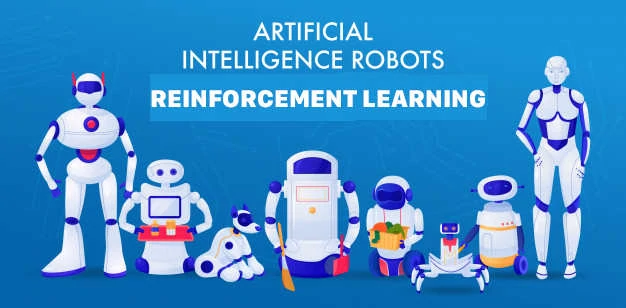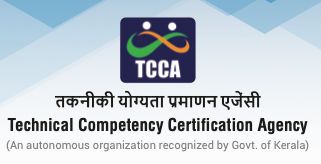Questions? Call-Us: +91 7034206363, 7034256363, 7034286363, 6238743273
- contact@expertzlab.com
- Mon-Sat: 09:00 - 18:00
Robotics with AI and Data Science in Kochi (Cochin), Kerala

Robotics with AI and Data Science
(8 Months)
Roboitics with Reinforcement Learning and appropriate hardware simulations. Course Includes use cases such as Computer Vision, Chatbot, Speech Recognition, Hand written text recognition, Spam Detection, Optical character recognition etc.
What is Robotics with AI and Data Science
Data Science is a core software development skill where Deep Learning is the heart.
Data Analytics is the pre-processing activities of Data Science. The preprocessed data
is generally used for Machine Learning Modelling. The time taken to run Data Science tasks
are critical, When that concerned for huge amount of data
to be processed to generate some significant information for decision making. Thus generally
Data Science works with Big Data Analytics as well. These skills are generally needed together
to make any important usecase completion.
Deep Learning is a kind of automated Machine Learning. That means the preprocessing activities
are not planned as a predecessor step. However the sampling, featurisation and vectorization
are inherent process like automated machine learning in Deep Learning.
Robotics is developing a program work as an agent. The program embedded in a hardware
will interact with the environment through the sensors and actuators.
Technologies
Advanced Python Programming (2 Months)
Complete Python programming with Advanced features like Django programming, Visualization
using Seaborn and matplotlib graphs, Data re-shaping with Numpy and Pandas.
SciKit Learn (2 Months)
Machine Learning Libarary that supports, Regression, Logistic Regression, Classification,
Clusterig, Decision Tree, Random Forest, Statistical algorithms and probability distributions.
TensorFlow and Keras (2 Months)
The number one choice of programmers to implement the Deep Learning Use cases. Direct acyclic
Graphs are used to store the relationships.
Python based Deep Learning extension over Tensorflow. Keras is widely used for
Neural network topology planning, training and execution. CNN, RNN, LSTM and other
advanced artificial nueral network use cases can be implemented using Keras Easily.
Cloud Computing (2 weeks)
AWS hosting, Regiions and Zones, Availablity Group, Load Balancing, Docker,
Kubernetes, ESB, S3 Bucket, AMI Security configuration, RDS, MongoDB etc.
Robotics with Reinforcement Learning (4 Months)
Agents, Environments, Q Learning, MDP Process,
Rewards and feedback, A* Search, Trees, Pruning,
Robotic process automation with
Reinforcement learning
Syllabus
Expertzlab Data Science course in Kochi contains all the industry required contents
and all of them will be implemented in the class with appropriate project use cases.
Students will have immense experience in writing code and thus this Data Science training
program is a easy gateway to an IT Job as Software Developer.
- Reinforcement Learning, Q-Learning, Markove decision, A*-Search, Trees and Graph Search, Pruning
- Speech to Text and Text to Speech conversions: MFCC, Mapping speech to Matrix, Creatingl Spectrograms
- Speech Recognition Classifier, Resample audio, Preprocessing audio wave, convert to deep learning model
- Building Keras models, Diagnostic Plot, Predictions, Text to Speech, loading waves, CNN models for wave predictions
- Chatbot from Scratch: Developing chatbots, Retrieval based chatbots, Generative based chatbots, LSTM for chatbot
- Context, Design of chatbots, Steps for building chatbots, Preprocessing data and loading data, Lemmatize, training and testing
- Predict Response, Random Intents, Executing Chatbots, Chatbots using CNN, Genism, use of Genism, Wordvec, Intent classifier
Python and Web Design Syllabus (2 Months)
Machine Learning Syllabus (2 Months)
Deep Learning Syllabus (2 Months)
Projects:
 How Expertzlab is different from others
How Expertzlab is different from others
Other Courses and Placement Details
Why Study With Us?
Our trainers are certified professionals working in the industry over 20+ years of expertize
Special Techniques
Our courses are categorized in to activity and project labs to get a feel of real project experiance.
Qualified Staff
Our Qualified trainers from industry give you best professional Knowledge.
Get Admission
Rush before all seats are reserved for current batch.
Call 7034256363
If you Have Any Questions Call Us / Whats app On 91-7034256363
Detail Syllabus:
- AI Oriented Data Science training Kochi
- Angular Node full stack training Kochi
- Python Full stack training Kochi
- ReactJS MERN Stack training Kochi
- Artificial Intelligence training Kochi
- Big Data Analytics training Kochi
- Robotics with AI and Data Science training Kochi
- Virtual Reality with AI and Data Science training Kochi
- Cyber Security with AI and Blockchain training Kochi
- MEAN stack training Kochi
- Java Spring Microservices training Kochi
- Java training Kochi
- Java Full Stack training Kochi
- PG Diploma in Big Data Engineering training Kochi
- Software Test Automation developer training Kochi
- Mobile Application Development training Kochi
- AWS Cloud computing training Kochi
- Javascript Full Stack training Kochi
- Angular mean stack / mern stack training Kochi
- JavaScript Full Stack Developer training Kochi
Quick Links:
Institute Hours:
- Monday to Saturday:
9:30 PM to 5:30 PM - Sunday :
No Admission/Enquiry
2017 - 2024 © Expertzlab Technologies All Rights Reserved.
-
Home |
About |
Courses |
Testimonials |
Expertzlab TAET |
Corporate Re-skill |
Placements |
Blogs |
Contact Us |


